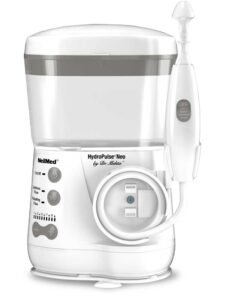Free Yourself from Sinus and Allergy – The Book
Chronic Sinusitis
Consider this patient:
L.B., age forty-two, developed an acute sinus infection sixteen months ago. She continues to have painful nasal passages, sinus pain, and nasal stuffiness and gets discharge of pus. She improves with antibiotics, but these are now making her sick with a stomach upset and a vaginal infection secondary to the antibiotics. She has seen the family doctor three times for this and the ENT specialist twice. The specialist took a CT scan and said that the openings to the sinuses were narrow and needed to be enlarged. L.B. has chronic sinusitis, with the same infection returning every two months.
In chronic sinusitis, the symptoms have been present for twelve weeks, or it is the same infection that started months ago but the patient never fully recovered. Even after the patient is feeling well, you can still see some membrane thickening and blockage of the openings. There may be symptoms secondary to the bacteria, such as asthma, cough, fever, dental pain and fatigue.
The concern today with regard to chronic sinusitis is the risk of associated illnesses. These include increased frequency and severity of urinary tract infections and elevated blood factors that are associated with circulatory risks, such as blood clots. Asthmatics are especially at risk. Under the unified field theory, whatever effects the sinuses equally effects the lungs. The more infection, the more inflammation, the more severe the asthma. The need for continued antibiotics is also a risk to the sinus patient. These patients may develop bacteria so resistant to antibiotics that nothing works to heal them.
The official definition for chronic sinusitis from the Sinus and Allergy Health Partnership states:
Symptoms include nasal obstruction, discolored nasal drainage, loss of smell, or facial pressure, or pain should be present for at least twelve weeks. A large number of patients may present with associated diagnoses, such as allergy or asthma. Causes include inflammatory conditions of bacteria and fungi.
According to the Unified Field Theory, the inflammation of the sinuses and the bronchi of the chest is a single disease and should be considered as one. The lungs and sinuses develop from the same area of the embryo. This is why so often cough accompanies a sinus infection. For example, we can measure the speed of the nasal cilia easily, and generally this reflects the speed of the cilia of the bronchi as well. This theory explains why persons with asthma often require attention to their sinuses.
In addition, recent study shows that persons with CRS –chronic rhinosinusitis- who also have asthma do not improve well until the rhinosinusitis is eliminated.

